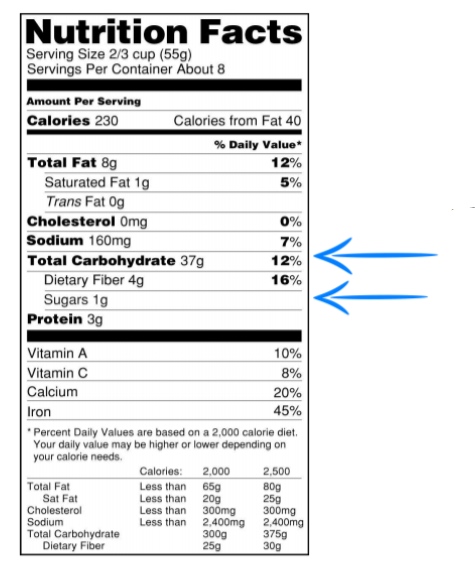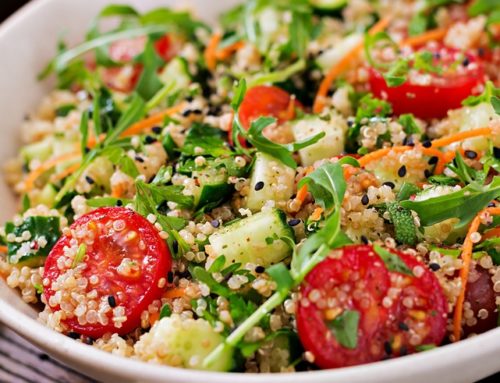Do you know how much sugar are you consuming on a daily basis?
If you’re using a food diary, such as the one available on the Virtual Health Partners’ portal, you do. And the amount may surprise you. Food manufacturers sneak sugar into a wide variety of products these days, from condiments, to canned tomato sauce. Why? Our brain chemistry reacts similarly to sugar as it does to addictive drugs, flooding our brain with the “feel-good” hormone called dopamine. So eating a lollipop seems a lot more pleasurable than eating an egg. The end result? We seek out sugary foods more readily than those without this sneaky little seductress.
Sugar is a form of carbohydrate that occurs naturally in foods like fruit and dairy products. The foods we nutritionists are typically more concerned with, however, are those with added sugars like cereals, breads, and snack foods, along with a slew of other processed foods. For many of us with weight loss plans, we have been instructed to limit carbohydrates, including sugar. With so many foods containing added sugar, this can prove to be challenging. Below, we will review how to identify the sugar content in a food, so that you can feel confident choosing an item that fits in your meal plan.
 This is a typical Nutrition Facts label that you will find on all packaged foods. The first blue arrow is where you will find the Total Carbohydrate content. Below it you will find a breakdown of the types of carbohydrates that contribute to this total, including sugars. To give you a frame of reference, each teaspoon of table sugar contains just over 4gm of sugar. Say you have been eating a packet of instant oatmeal every morning that contains 12gm of sugars. This small portion has a surprising 3 tsp of sugar added! For women, this breakfast would account for half of the recommended 6 tsp/day (and for men, a third of the recommended 9 tsp/day). A smarter choice would be old fashioned rolled oats, which contain a measly 1gm of sugar per serving.
This is a typical Nutrition Facts label that you will find on all packaged foods. The first blue arrow is where you will find the Total Carbohydrate content. Below it you will find a breakdown of the types of carbohydrates that contribute to this total, including sugars. To give you a frame of reference, each teaspoon of table sugar contains just over 4gm of sugar. Say you have been eating a packet of instant oatmeal every morning that contains 12gm of sugars. This small portion has a surprising 3 tsp of sugar added! For women, this breakfast would account for half of the recommended 6 tsp/day (and for men, a third of the recommended 9 tsp/day). A smarter choice would be old fashioned rolled oats, which contain a measly 1gm of sugar per serving.
For more information on ways to limit your sugar intake, watch for our next nutrition post, or speak with a Nutrition Consultant!





